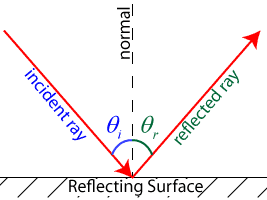2P05: When Alkali Meets Ammonium Salts
The aim of this experiment is to investigate the action of alkalis on ammonium salts.
The general equation of this reaction is:
Alkali + Ammonium Salt --> Salt + Ammonia + Water
Notes:
It is necessary to warm the mixture so that Ammonia gas can evaporate from the solution.
This is to ensure that the gas tested using DAMP litmus paper is Ammonia and not other gases.
A DAMP litmus paper is needed as alkali only shows its properties in the presence of water. In aqueous solution, ammonia acts as an alkali, acquiring hydrogen ions to form ammonium hydroxide.
Ammonia is a pungent gas.
------------------------------------------------------------
2P06: What could be Substance X?
Aim: To ascertain the identity of Substance X
The identity was later found out by me and my partner, Harn Ern.
Substance X is Ammonium Carbonate (NH4CO3)
Introduction to Ammonium:
The ammonium (more obscurely: aminium) cation is a positively charged polyatomic ion with the chemical formula NH4+. It is formed by the protonation of ammonia (NH3). Ammonium is also a general name for positively charged or protonated substituted amines and quaternary ammonium cations (NR4+), where one or more hydrogen atoms are replaced by organic radical groups (indicated by R).
Ammonium ions are a waste product of the metabolism of animals. In fish and aquatic invertebrates, it is excreted directly into the water. In mammals, sharks, and amphibians, it is converted in the urea cycle to urea, because urea is less toxic and can be stored more efficiently. In birds, reptiles, and terrestrial snails, metabolic ammonium is converted into uric acid, which is solid and can therefore be excreted with minimal water loss.
Ammonium is an important source of nitrogen for many plant species, especially those growing on hypoxic soils. However, it is also toxic to most crop species and is rarely applied as a sole nitrogen source.
2P07: Laws of Reflection
Aim:
From these experiment I have learnt that the angle of Incidence is equal to the angle of the Reflection.
Law of reflection is applicable to all surfaces within experimental error.

2P08: Mirror Images
------------------------------------------------------------
2P07: Laws of Reflection
Aim:
- To explore how light rays are reflected from mirrors.
- To understand and verify the Laws of Reflection
From these experiment I have learnt that the angle of Incidence is equal to the angle of the Reflection.
Law of reflection is applicable to all surfaces within experimental error.

------------------------------------------------------------
2P08: Mirror Images
Aim: To observe the image of an object in mirrors and list its characteristics
This experiment may not be very appealing but it is definitely enriching.
There are a few things which I have learnt:
- The image is as far behind the mirror as the object is in front of the mirror.
- All image formed by the plane mirror is laterally inverted.
- The size of the image is the same as the object.
- The orientation of the Image is also congruent to that of the object.
- All image formed on the plane mirror is virtual.
Question: Why is an image virtual?
Ans: No actual light rays actually converge at the image's position hence the image cannot be captured on the screen and is virtual.
2P09: Refraction of light
------------------------------------------------------------
2P09: Refraction of light
Aim: To explore how light rays are refracted through a plastic block
This experiment involves the use of the mathematical function "SINE". This is used to measure the refractive index of an object.
Conclusion:
Angle of refraction is always smaller than the angle of incidence when the light is travelling from a less dense medium to a denser medium.
Angle of emergence is the same as angle of incidence.
2P10: Critical Angle and Total Internal Reflection(T.I.R.)
This experiment involves the use of the mathematical function "SINE". This is used to measure the refractive index of an object.
Conclusion:
Angle of refraction is always smaller than the angle of incidence when the light is travelling from a less dense medium to a denser medium.
Angle of emergence is the same as angle of incidence.
------------------------------------------------------------
2P10: Critical Angle and Total Internal Reflection(T.I.R.)
Aim:
To measure the critical angle and investigate T.I.R.
To observe an optical fibre and understand how light travels through it.
Initially, I did not really how the equation of the critical angle is derived. It was only when I worked out the equation using the Snell's Law and with the aid of the Reversibility of Light was I able to thoroughly understand the equation.
In order for total internal reflection to occur, 2 conditions must be fulfilled.
To measure the critical angle and investigate T.I.R.
To observe an optical fibre and understand how light travels through it.
Initially, I did not really how the equation of the critical angle is derived. It was only when I worked out the equation using the Snell's Law and with the aid of the Reversibility of Light was I able to thoroughly understand the equation.
In order for total internal reflection to occur, 2 conditions must be fulfilled.
- The incident ray must be in the optically denser medium.
- The angle of incidence in the denser medium is greater than the critical angle.
 |
| Optical fibre |
No comments:
Post a Comment